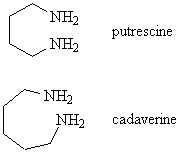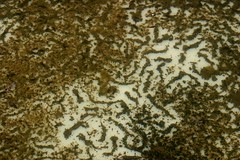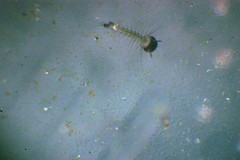Sunday, May 28, 2006
burns-me-to-the-quick
I have been wanting to write about my thoughts and findings on the connections between the simple molecules that form when organisms die to the molecules organisms make (while alive) to attract, distract, and manipulate each other... but today is Memorial Day. And I feel the need to add my voice to the roar that is building to this farce....
Memorial Day and Bush's War
How can anyone say that in defending the WAR we are defending our troops?
Our troops are living breathing human beings.
War is an act and it is not a living breathing life.
War is an action that we choose.
War does not breath air.
War does not feel.
War does not bleed and die.
War, however, is fed and supplied and it spreads.
War does not build houses or plant crops or cure diseases.
War does not change diapers or feed the poor.
War is what is in essence what is the worst that human beings do.
War is what is draped by those who promote and propagate it in ill fitting descriptions of necessity and patriotism and for our common good.
War not only kills those who fight but those who don't.
War is what scours the earth of human beings and of other life as well.
War does not stop when it ends.
War only stops when it never begins.
Sunday, May 21, 2006
chems
Chemosensory is essential for survival for life. Pheromones are chemicals that an organism releases externally to send information to another organism.... Some of these chemicals have been identified from animals such as moths and humans. Two interesting components to this story are about how animals find food plants and mates, and how plants hijack this trait for their own needs.
Wednesday, May 17, 2006
crazing
...So we find that the siphoned water from the pot that has mostly cattails causes lots of algae to grow and the pot with bulrushes mixed with the pot with no plants has little alga growth in comparison...
The mozzies loves the pot with the algal growth! Though the two pots have many mosquito larvae, the one with lots of algae has more that are ready to emerge! There are lots of places to hide or lots of food to eat?
But just look at the pattern of algae that floated to the bottom....
We know now that the water from the pots had lots of colloidal molecules or NOM or natural organic matter which, through electrostatic conditions, attracted to the metals that we spiked in the pots.... It kept the toxic metals suspended in the water column caused the change in the flagellate populations and may have killed the fish and dragonflies... . But look at the pattern of the algae on the bottom of the pot.... you are now looking at what the colloids looked like.... Last week they were floating in the water but now they are like curtains that have been cut from their curtain rods.... The colloids are like humic molecules with multiple spots which things (not so nice things) attach .... metals - PAHs - plasticizers, hormones.... This is the stuff that makes our water systems go bad. This is the stuff made of carbon molecules (dead things make these floating ghosts of carbon) which pick up the bad stuff we let flow down our roads into our rivers... and stream and oceans...
The mozzies loves the pot with the algal growth! Though the two pots have many mosquito larvae, the one with lots of algae has more that are ready to emerge! There are lots of places to hide or lots of food to eat?
But just look at the pattern of algae that floated to the bottom....
We know now that the water from the pots had lots of colloidal molecules or NOM or natural organic matter which, through electrostatic conditions, attracted to the metals that we spiked in the pots.... It kept the toxic metals suspended in the water column caused the change in the flagellate populations and may have killed the fish and dragonflies... . But look at the pattern of the algae on the bottom of the pot.... you are now looking at what the colloids looked like.... Last week they were floating in the water but now they are like curtains that have been cut from their curtain rods.... The colloids are like humic molecules with multiple spots which things (not so nice things) attach .... metals - PAHs - plasticizers, hormones.... This is the stuff that makes our water systems go bad. This is the stuff made of carbon molecules (dead things make these floating ghosts of carbon) which pick up the bad stuff we let flow down our roads into our rivers... and stream and oceans...
Sunday, May 14, 2006
Haemorrhagica2
Tigers tigers tigers
When did this tiger from Pit 91 of La Brea Tar Pits run? When the L.A. River ran through the Wilshire Miracle Mile passing by the Art Museum. This little ferocious beast fed upon flies, ants and such next to some other extrodinary animals which roamed the Los Angeles Basin.
It may have died before people came to the Americas. But, it ran in the muds of the L. A. River when mammoths and saber toothed tigers plunged into sticky tar and died. Camels and horses and condors and sloths... lions bigger then their African counter parts, died in the asphalt leaving their bones for us to marvel.
Chris Nagano determined this tiger thorax (amazing!!!) and one other tiger part in 1980.... Roy Snelling (hymenopterist) did the other two.... only four Cicindela parts at the museum for now .... just one C. oregona and two C. hemorrhagica and one unknown tiger.
When did this tiger from Pit 91 of La Brea Tar Pits run? When the L.A. River ran through the Wilshire Miracle Mile passing by the Art Museum. This little ferocious beast fed upon flies, ants and such next to some other extrodinary animals which roamed the Los Angeles Basin.
It may have died before people came to the Americas. But, it ran in the muds of the L. A. River when mammoths and saber toothed tigers plunged into sticky tar and died. Camels and horses and condors and sloths... lions bigger then their African counter parts, died in the asphalt leaving their bones for us to marvel.
Chris Nagano determined this tiger thorax (amazing!!!) and one other tiger part in 1980.... Roy Snelling (hymenopterist) did the other two.... only four Cicindela parts at the museum for now .... just one C. oregona and two C. hemorrhagica and one unknown tiger.
mosquito
Well, all of my mosquitoes have died... in both containers. It was just a small look into the pesticide issue.
But, was it only the pesticide?
We put herbicide and Tylenol and anti-psychotic drugs and mercury and zinc and PAHs ... Then a scum and a slick formed and cyano-bacteria bloomed and fungus formed on the dead mats...
Because all of the fish and insects died in all of the pots, then, two weeks later, mosquitoes laid their eggs and larvae hatched. We really needed to take a look at tolerances and toxicity.... But, we did not have all the time and, oh, that awful stuff... money, to conduct yet another study.... We are still processing all of the other samples.... leaves and stems and roots and water and soil and algae and fish and dragonflies .....
So, ...to just to watch the development of the mosquitoes from the pots... I scooped out enough for two batches (one collected two days after the first).... I realized I did not have enough egg cases, but I would note development and time and conditions and the final result - no matter what happened.
I did not mix the water between the two containers and when evaporation lowed the levels, I re-filled to the original mark with drinking water. Each plastic covered (screened) container had one good egg mass. The first container had very little water about one and a half centimeters deep (cottage cheese container).... The second one had three centimeters of water (same type of container and lid).
Within the first day I had mozzies in the first container. Two days later, the mosquitoes in the second container emerged. Four days after that the second container with the most water, all larvae died.
Looking closer at the differences between the two containers, I noticed that there was a lot of fungal growth on the dragonfly tests (skin left over from emerging larvae) in the second container. The leaves left in the first did not have this fungal growth (both samples came from the same pot). The strands of fungus were long, dark, and almost black, and needle like.
The first container with the first group of mozzies, had clumps of green on the bottom - see the picture. The second container was murky but had either ciliates or flagellates swimming. The first container also had the same types of protozoa but the water was clear. .....Mozzies, for all of their bad rap, filter water of protozoa and algae, so this made sense... but what happened to the second container?
One would think the container with the most water (the second one) would be more successful! Both containers were exposed to some light so that algae could grow. The first container's second batch of mozzies (four times bigger then the first group before they died) fed on the bodies of their brothers and sisters and algae.... The larvae in the second patch only developed to the size of the first batch and then died....
My friend found a paper that described a similar study of a wetland habitat where after adding metals to the water, a bloom of flagellates occurred..... As I recall in marine systems,.... some ocean dinoflagellates can become toxic when stressed. Also, in the marine environment, diatom blooms occur near the outflows from city sewage and urban runoff. Diatoms when stressed (pH changes, exposure to lead and other toxic metals) and deprived of normal river runoff - iron (this is a limiting factor for life in the ocean phytoplankton) - release domoic acid which is neurotoxic to vertebrates. I don't know what kind of flagellates are in our experimental freshwater system, but one wonders....
It's really all about balance isn't it.
But, was it only the pesticide?
We put herbicide and Tylenol and anti-psychotic drugs and mercury and zinc and PAHs ... Then a scum and a slick formed and cyano-bacteria bloomed and fungus formed on the dead mats...
Because all of the fish and insects died in all of the pots, then, two weeks later, mosquitoes laid their eggs and larvae hatched. We really needed to take a look at tolerances and toxicity.... But, we did not have all the time and, oh, that awful stuff... money, to conduct yet another study.... We are still processing all of the other samples.... leaves and stems and roots and water and soil and algae and fish and dragonflies .....
So, ...to just to watch the development of the mosquitoes from the pots... I scooped out enough for two batches (one collected two days after the first).... I realized I did not have enough egg cases, but I would note development and time and conditions and the final result - no matter what happened.
I did not mix the water between the two containers and when evaporation lowed the levels, I re-filled to the original mark with drinking water. Each plastic covered (screened) container had one good egg mass. The first container had very little water about one and a half centimeters deep (cottage cheese container).... The second one had three centimeters of water (same type of container and lid).
Within the first day I had mozzies in the first container. Two days later, the mosquitoes in the second container emerged. Four days after that the second container with the most water, all larvae died.
Looking closer at the differences between the two containers, I noticed that there was a lot of fungal growth on the dragonfly tests (skin left over from emerging larvae) in the second container. The leaves left in the first did not have this fungal growth (both samples came from the same pot). The strands of fungus were long, dark, and almost black, and needle like.
The first container with the first group of mozzies, had clumps of green on the bottom - see the picture. The second container was murky but had either ciliates or flagellates swimming. The first container also had the same types of protozoa but the water was clear. .....Mozzies, for all of their bad rap, filter water of protozoa and algae, so this made sense... but what happened to the second container?
One would think the container with the most water (the second one) would be more successful! Both containers were exposed to some light so that algae could grow. The first container's second batch of mozzies (four times bigger then the first group before they died) fed on the bodies of their brothers and sisters and algae.... The larvae in the second patch only developed to the size of the first batch and then died....
My friend found a paper that described a similar study of a wetland habitat where after adding metals to the water, a bloom of flagellates occurred..... As I recall in marine systems,.... some ocean dinoflagellates can become toxic when stressed. Also, in the marine environment, diatom blooms occur near the outflows from city sewage and urban runoff. Diatoms when stressed (pH changes, exposure to lead and other toxic metals) and deprived of normal river runoff - iron (this is a limiting factor for life in the ocean phytoplankton) - release domoic acid which is neurotoxic to vertebrates. I don't know what kind of flagellates are in our experimental freshwater system, but one wonders....
It's really all about balance isn't it.
Subscribe to:
Posts (Atom)




